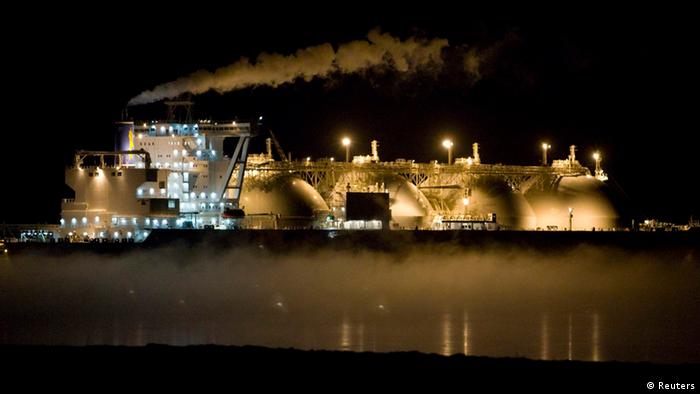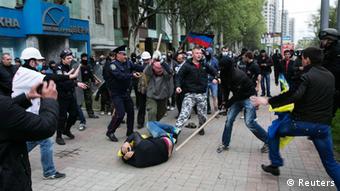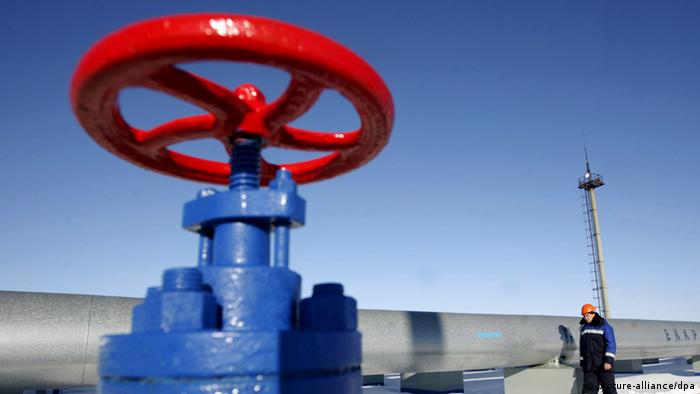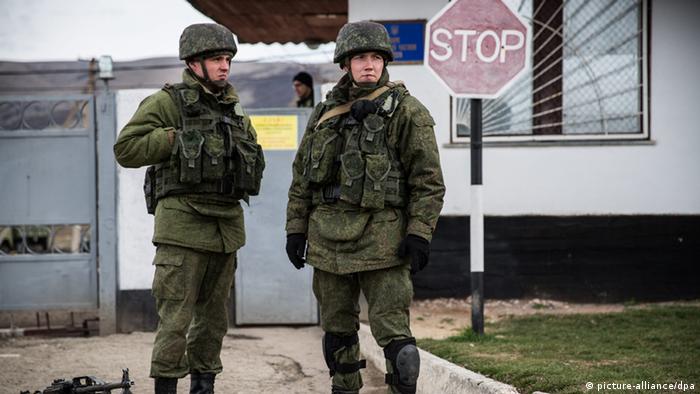
Posts by EmanueleScimia:
China emerges a major winner from Iran nuclear deal
July 22nd, 2015
By Emanuele Scimia.
The protagonists of the multilateral deal on the limitation of Iranian nuclear activities are repeating as a mantra that there are no clear winners and losers from the talks. In their reasoning, this means they reached an acceptable result for all parties involved in the process. Yet it must be said that even if the official diplomatic narrative does not depict China as a winner at the negotiating table regarding Iran’s nuclear future, facts attest that Beijing will probably be one of the principal beneficiaries of the agreement.
Iran and the P5+1 group of world powers – the United States, China, Russia, Britain and France plus Germany – signed last Tuesday a long-expected deal to degrade Tehran’s sensitive nuclear programme in exchange for the lifting of damaging sanctions that the United Nations, United States and European Union had imposed on Tehran over the past years in an effort to halt its uranium enrichment.
The gradual relief of sanctions on the Iranian regime could pave the way for Beijing’s geopolitical advances in the Middle East and the Persian Gulf. That fits in with a much bigger picture of China trying to promote its Silk Road economic belt and Maritime Silk Road project, a proposed land- and sea-based transport system that aims to connect China with Western Europe.
China was Iran’s largest commercial partner in 2013, with a combined trade worth about €30 billion (HK$252 billion), according to the International Monetary Fund. These numbers are likely to increase after the Iranian market becomes more accessible, particularly in the energy sector.
China is one of the largest importers of Iranian crude and condensate, the US Energy Information Administration reports. Despite the regime of sanctions, Chinese state-run companies such as China Petroleum and Chemical Corporation (Sinopec) and China National Petroleum Corporation are still participating in upstream projects in Iran, exploring and developing some Iranian oil fields. After the financial and economic restrictions on Tehran are lifted, Beijing could invest in energy infrastructure in the country to secure further flows of raw materials for its gigantic industrial complex, as well as for its growing market of final consumers – and all of this against a backdrop of declining oil and gas prices.
Chinese capital will ultimately tie Iran to Beijing’s economic clout and geopolitical design for the Eurasian space. A case in point is Beijing’s interest in the China-Pakistan Economic Corridor – which should connect to the two Silk Roads, and then another connection using the planned Iran-Pakistan gas pipeline. The building of its Pakistani section has been delayed, notably because of pressures from the US and Saudi Arabia. But in April, Beijing pledged help for its construction.
In the end, the deal on the Iranian nuclear programme could serve as a cornerstone of stability in the region spanning Iran, Pakistan and Afghanistan, which is central to China’s Silk Road strategy. It is a multilateral pillar adding to the diplomatic moves that Beijing is conducting on its own, such as its attempts at brokering, with the involvement of Pakistan’s leadership, a peace agreement between the Afghan government and the Taliban leadership.
It is worth noting that the apparent resolution of the crisis does pose challenges for China as well. The Washington-Tehran tug of war in the past 10 years over the supposed military nature of the Iranian nuclear programme benefited Beijing, as it forced the US to concentrate more diplomatic, military and economic resources on the Middle East, and less on other geopolitical theatres such as the Pacific Rim.
Now that Iran will be gradually legitimised within the international system of relations, the US may refocus on its much-trumpeted rebalancing/pivot to Asia-Pacific. However, apart from this “unintended consequence”, it seems China’s gains from the agreement on Tehran’s nuclear capability far outweigh its losses, at least in the immediate future.
Comments Off on China emerges a major winner from Iran nuclear deal
South Stream’s Demise Shakes up Italian-Russian Relations
December 9th, 2014By Emanuele Scimia.
The “Putinian Pax Energetica”—Russia’s strategic use of energy exports and pipeline politics to influence countries in its neighborhood—is faltering, and Italy now appears to be taking countermeasures to deal with it. On December 1, during a state visit to Turkey, Russian President Vladimir Putin finally sentenced to death his proposed South Stream natural gas pipeline. This Russian-led mammoth energy initiative had languished for years as a virtual project (see EDM, September 30, 2009; July 27, 2012; July 17, 2014), and more recently Italy has played its part in burying it. This development can be taken as an indication that Rome is trying to recalibrate its relations with Moscow. Evidently, Rome hopes to strike a balance between the decade-long Italian policy of appeasing its largest energy supplier, and its obligations as a European Union member state that must implement sanctions against Russia for its intervention in Ukraine.
The South Stream gas project was estimated most recently at about $50 billion and was to connect Russia with Bulgaria by circumventing Ukraine along a route on the Black Sea floor, and then proceeding further westward on European territory. Italy’s state-owned energy producer ENI had a 20-percent share in the venture, which was spearheaded by the Russian state-run natural gas monopoly Gazprom—the remaining 30-percent stake was equally divided between France’s EDF and Germany’s BASF-Wintershall. With the pipeline’s cancellation, ENI can rely on a pair of safeguard clauses that allow it to sell its stakes to Gazprom and drop out of the project undamaged (Corriere della Sera, December 2).
ENI also has its own 43-percent controlling stake in the Italian oil and gas service company Saipem, which, in March 2014, secured a $3 billion contract to build an undersea section of South Stream. Now, to save its investment, it might invoke international trade law protection, unless part of the work it already carried out is used to construct a distinct gas pipeline to Turkey (Il Sole 24 Ore, December 4).
In November 2014, ENI CEO Claudio Descalzi remarked that the company would proceed with South Stream only if the required investment were not to exceed $742 million. At that point, Descalzi pointed out that the project was struggling to raise funds because of the international sanctions imposed on Russia over Ukraine (La Stampa, November 5).
Such a caveat attached by ENI’s boss was the product of both financial and political assessments: Italy’s incumbent Prime Minister Matteo Renzi has basically distanced himself from South Stream, in contrast to his predecessors Enrico Letta, Mario Monti and notably Silvio Berlusconi. In Renzi’s words, the project “is not key to Italy” (Ansa, December 2).
In its bid to diversify oil and gas sources, so as to ease its dependence on Russia’s energy exports, Italy is increasingly looking to the development of the Southern Gas Corridor (SGC), which will link gas fields in Azerbaijan to the Italian/Adriatic region via Georgia, Turkey, Greece and Albania. The SGC is expected to connect three separate conduits: the existing South Caucasus Pipeline (SCP) and the planned Trans-Anatolia Natural Gas Pipeline (TANAP) and Trans-Adriatic Pipeline (TAP).
The consortium of nations involved in the SGC project is also keen to extend the energy corridor eastward to natural gas producer Turkmenistan through a proposed Trans-Caspian gas pipeline. Recent agreements that ENI signed with the Turkmen State Agency for the Management and Use of Hydrocarbon Resources and state-controlled energy company Turkmenneft should be seen in this perspective. ENI has obtained an extension to 2032 of the Production Sharing Agreement (PSA) governing upstream activities in the onshore Nebit Dag block, in western Turkmenistan. More importantly, the Italian energy company has gained the possibility to expand its operations to Turkmenistan’s offshore blocks in the Caspian Sea (ENI.com, November 18)
South Stream’s demise, along with ENI’s increased focus on Africa, not least on countries like Mozambique, will prompt a change in energy relations between Rome and Moscow. These new dynamics notwithstanding, it seems that Italy has not entirely scrapped its rather fanciful ambition of bridging the geopolitical gap between the Kremlin and EU. It is worth remembering that Russia is still the largest supplier of oil and gas to Italy, as it accounts approximately for 30 percent and 15 percent of Rome’s gas and oil imports, respectively (lavoce.info, March 28).
Since the Ukrainian crisis first exploded, most of Italy’s leaders contended that Western sanctions to punish Moscow for annexing the Crimean Peninsula and for supporting separatist militants in Ukraine’s southeast undermine both Russian and European economies in a “lose-lose” scenario of sorts. The solution to the Ukrainian mess, the Italian leadership asserted, depends on a political settlement that would safeguard both Ukraine’s independence and Russia’s pivotal role in the past-Soviet space. To reach this compromise, Italy’s government backs a strong process of decentralization of powers in Ukraine that would protect both the country’s territorial integrity and the peculiar identity of its Russian-speaking citizens.
Embodying this trend, first and foremost, is Rome’s reiterated position against Ukraine’s accession to the North Atlantic Treaty Organization (NATO), as reaffirmed by the new Italian Minister of Foreign Affairs Paolo Gentiloni in mid-November. This stance aligns Italy with France and Germany in opposition to some EU member states beyond the old Iron Curtain, which advocate for Kyiv’s freedom to seek membership in the Alliance (Corriere della Sera, November 15).
According to Romano Prodi, who was both Italian prime minister and European Commission chief in the past, Ukraine cannot be neither Russian nor European. It will have to remain a neutral country straddling Brussels’ and Moscow’s spheres of influence and work as a bridge between these two Eurasian heavyweights. Back in 2008, in his position as Italy’s head of government, Prodi joined with leaders from Berlin and Paris against then–US President George W. Bush’s proposal to let Ukraine enter NATO (Il Messaggero, October 19).
In the end, Italy is walking a tightrope over the current Western-Russian spat; and such a diplomatic balancing act is not new in Rome. It is the old story of Italian governments striving to find a position of equidistance in case of international crises. Italy has often pursued this approach—for instance with regard to the Israeli-Palestinian conflict—to escape its basic geopolitical irrelevance. Yet, a game-changer is fast approaching, which may finally push Italy toward a more critical posture over Russia’s growing assertiveness from the Arctic to the Black Sea: the definitive launch of a planned EU common energy policy.
Comments Off on South Stream’s Demise Shakes up Italian-Russian Relations
Opinion: Japan, Russia walk energy tightrope over Ukraine
April 30th, 2014
By Emanuele Scimia.
It is difficult for Japan to ignore Russia’s relevance in its search for a diversified set of oil and gas suppliers. But the spat between Moscow and the West about Ukraine puts Tokyo in a geopolitical quandary.
Ukraine is a remote battleground for Japan, but geopolitical interconnections in the 21st century ultimately shorten geographic distances, plunging Tokyo in a dilemma over how to handle relations with a Russia swallowing the Crimean peninsula to the detriment of Kiev’s sovereignty and in breach of the (increasingly ethereal) international law.
Japan is the world’s biggest consumer of liquefied natural gas (LNG), second largest coal importer and third largest oil purchaser. As it is trying to diversify its supply sources to alleviate dependence on the Middle Eastern oil and gas producers, the Japanese cabinet led by Prime Minister Shinzo Abe finds itself in the unenviable position to balance pressures from the United States to beef up sanctions against Moscow’s seizure of Crimea and permanent military threat to the mostly Russophone Eastern Ukraine with its need to manage growing energy ties with the Russian supplier.
Rising energy trade
Increased energy imports decidedly contributed to quadrupling Japan’s trade deficit in March compared to the same period in 2013, with imports of Liquefied Petroleum Gas (LPG) up by more than eight percent and supply of LNG nearly four percent, the Japanese Ministry of Finance (MOF) reported on April 21.
Tokyo’s energy procurements have been soaring after the earthquake and tsunami in 2011, when the Japanese government shut all nuclear reactors across the country in the wake of the Fukushima Daiichi nuclear plant disaster. In March, imports of mineral fuels from Russia reached 2.2 billion USD (224.4 billions yen), up 31.5 percent year-on-year, the MOF wrote.
Approximately four percent of Japan’s oil imports originated from Russia in 2012 (around 185,000 barrels per day). Moscow’s Eastern Siberia-Pacific Ocean pipeline, a 4,670 kilometer-long conduit running from the Siberian city of Taishet to the Kozmino Bay Oil Terminal on the Pacific Ocean, has pumped crude oil to the Japanese territory from 2009 on, according to data from the US Energy Information Administration (EIA).
In 2012, Moscow was also Japan’s fourth-largest supplier of LNG, accounting for 10 percent of Tokyo’s imports. Japan has been importing LNG from Russia’s Sakhalin terminal since 2009 while proposing to increase gas imports from Siberia through a new pipeline or more LNG shipments – Tokyo’s procurements covered 76 percent of Sakhalin LNG exports in 2012, PFC Energy reports.
Russia’s shift to east
Wary of new Western sanctions over Ukraine bashing its energy sector, Russia is looking eastward to make up for the possible loss of the lucrative European market, which draws about 76 percent of its natural gas exports and 79 percent of its crude oil sales, an EIA analysis brief underlines.
By attending a Russia investment forum in Tokyo on March 19, Igor Sechin, head of Moscow’s state energy giant Rosneft, tried to lure Japanese investors, promising more cooperation in the development of the Russian oil and gas sector.
Just one day earlier, speaking to the Agence France Presse (AFP) news service, Japanese Trade Minister Toshimitsu Motegi had highlighted that the economic collaboration between Tokyo and Moscow had constantly deepened in the past few years, not least with regard to energy trade, and that Japanese companies had already started up joint projects with Rosneft. Suffice it to say that Japan’s Mitsui and Mitsubishi have a combined interest of 22.5 percent in Russia’s Sakhalin-II upstream oil and gas project, a field that would have reserves of roughly 1.2 million barrels of crude and condensate.
Dilemma of sanctions
At present, the Japanese government’s major preoccupation is that any move to pile on Russia additional economic penalties could dent its ties with the Kremlin. Sechin, a long-time protégé of Russia’s President Vladimir Putin, was targeted by a US asset freeze and visa ban along with other six Russian officials on April 28.
Japan enacted sanctions on Russia in March – two days after a referendum in Crimea had paved the way for Moscow’s annexation of the peninsula in the Black Sea. Tokyo is expected to postpone negotiations on easing visa requirements and freeze talks about a string of deals in fields such as new investment opportunities, outer space and prevention of risky military activities – moves that are seen as softer than those implemented by the European Union and United States.
Credit ratings agency Standard & Poor’s (S&P) cut the Russian sovereign debt’s rating to one notch above “junk” status on April 25, due to explosive geopolitical tensions with Ukraine, which triggered an outflow of both foreign and domestic capital from the Russian economy.
Credit ratings agencies are considering further downgrades after the decision made by Western countries to pass tighter sanctions against Russia, blamed for not de-escalating tensions in Eastern and Southern Ukraine. Following Sechin’s inclusion in the new US sanctions list, S&P downgraded Rosneft’s credit rating to BBB- (near junk status).
The ambivalence of energy relations between Japan and Russia calls to mind the Euro-Russian interdependence on oil and gas trade. Simply put, Moscow needs to sell LNG and Tokyo must buy it. Because of Russia’s weak growth prospects and risks of partial political isolation, the Japanese cabinet could leverage on this structural mutual dependence to put back on track its energy ties with the Russian bear in case it was called upon by the US and Europe to inflict a new round of penalties on the Kremlin.
In this broad picture of oil and gas connections with Russia, independently from Washington’s military umbrella and its much-trumpeted pivot on Asia-Pacific, Japan could solve the Ukrainian conundrum in its favor, even raising the stake with regard to sticking points such as the freezing of negotiations with the Russian leadership over the status of the disputed Southern Kuril islands (Northern Territories in Japanese parlance) and Russia’s recent backing of Chinese territorial demands in the East China Sea against Tokyo’s legal claims.
Comments Off on Opinion: Japan, Russia walk energy tightrope over Ukraine
Beijing tests Russian energy politics
April 16th, 2014By Emanuele Scimia.
In case of showdown over Ukraine, Russia aims at replacing Europe with China to sell its huge reserves of oil and gas, but Beijing is open to energy collaboration with the Kremlin only on its own terms.
Western powers and Russia keep on skirmishing over Ukraine, and China is weighing its options in case of this war of attrition results in an energy dispute between the Kremlin and Europe.
After Moscow’s annexation of Crimea, a narrative that Russia could offset reduced demand of oil and gas from the Old Continent with export to Asia is brewing, accompanied by concurrent remarks that the Chinese leadership might take advantage of the Russian need to reorient its energy sales should the European countries try to curb their reliance on commodities flowing from the former Soviet Union.
The question is whether Russian President Vladimir Putin will succeed in diverting from Europe to China 130 billion cubic meters (bcm) of gas annually. Russia covered 1.2 percent of China’s gas import in 2012, according to the BP Statistical Review. In a memorandum of agreement signed in Moscow last year, China and Russia estimate that annual deliveries of Russian gas will touch upon 38 bcm from 2018 on.
It is since 2006 that Beijing and Moscow have been negotiating a gas deal in vain. China National Petroleum Corporation (CNPC) and Russia’s Gazprom still have not agreed on tariffs and supply routes. The last deadline missed was on January 31, after China reiterated that it had no intention to pay the rates that Moscow was applying to European buyers.
With regard to oil trade, in 2013 the two countries reached an arrangement whereby China would buy more than 355 billion USD of Russian crude in the foreseeable future. Russia’s oil giant Rosneft would let CNPC explore three offshore Arctic blocks in exchange – Russia accounted for nine percent of Beijing’s crude imports in 2013, US Energy Information Administration shows.
It is probable that Moscow and Beijing are going to speed up negotiations on the long-delayed gas deal, with the Chinese government ready to capitalize on the Kremlin’s present weak bargaining power to gain discounted prices, but the Middle Kingdom will make every effort to avert a lethal embrace with its energy-rich neighbor.
Europe’s dependence on Russian gas – not least via Ukraine’s territory – is a stark reminder that exposure to potential cuts of supplies by Moscow is a tangible danger for China. To minimize its energy security risk, closer relations with Russia should be counterbalanced by both a more diversified energy basket and a variety of suppliers and relative transit routes.
Coal and renewable energy
“Energy independence means political independence,” Paolo Scaroni, the outgoing chief executive of Italy’s ENI, was quoted as saying by the Italian daily Corriere della Sera on March 25. By applying this concept to the case of Sino-Russian ties, Scaroni pointed out that China preferred to burn domestic coal – with a high level of pollution – rather than buying more oil and gas from Russia, so as to protect its geopolitical autonomy.
At most, Beijing is turning to renewable energy to tackle pollution from coal combustion. The Chinese government indeed aims at adding 49 gigawatts of renewable-energy capacity in 2014, the Chinese National Energy Administration stated on January 8.
In addition to developing a more efficient use of coal and its shale gas resources, China is set to become the world’s biggest solar market ahead of Germany by installing roughly 5.40 gigawatts of photovoltaic panels by the end of 2014, Bloomberg News Energy Finance reported late last year.
Geopolitics of transit routes
Beijing’s engagement to open oil and gas links across Asia is a cornerstone of its foreign policy. China’s search for new energy sources and transit passages is relevant for the government of Chinese President Xi Jinping to such an extent that it is planning massive investments even in troubled regions, where transport and trade are constantly at risk.
The first target of China’s geopolitics of pipelines is Central Asia. In spite of persistent regional instability, Beijing is poised to build the fourth branch of China’s Central Asia Gas Pipeline (CAGP).
Ushered in late 2009, CAGP delivers Turkmen gas to China via Uzbekistan and Kazakhstan. The new strand of this Central Asian gas pipeline will run through Tajikistan and Kyrgyzstan, outflanking the Kazakh territory, cross-border tensions between these two former Soviet republics notwithstanding.
The enhanced version of CAGP is expected to carry 80 bcm of gas per year by 2020, representing over 40 percent of Beijing’s imports in this sector, Radio Free Asia wrote on March 24, citing data from CNPC.
Shifting from north to south, China is also looking to the Indian Ocean to diversify its energy partners. In October 2013, a conduit capable of piping 12 bcm of gas each year from Myanmar’s west coast to China’s southwest region went online. A parallel oil link that is purported to pump 440,000 barrels of oil a day to China should go into operation by next June.
While Beijing decreases its energy vulnerability with these new transit routes, as vessels transporting oil and gas from Africa and the Middle East can circumvent the Malacca Strait chokepoint, it will concurrently struggle to protect its investments in the country once known as Burma, where ethnic conflicts are common and sweep through areas crossed by the two pipelines.
Pakistan’s Gwadar
The Arabian Sea is yet another pivot of China’s complex energy framework. During a meeting in Beijing with Pakistan’s officials on February 19, China agreed to finance infrastructure projects worth 900 million USD in the Pakistani port of Gwadar. These funds are part of a Chinese plan to channel 12 billion USD into an economic corridor, comprising a 2,000 kilometer-long road link and a parallel railway, which would connect the unstable southwestern Pakistani province of Balochistan with China’s Xinjiang region through the Karakoram mountain range.
The Chinese government’s energy investments in volatile nations are risky but they contribute to alleviate its dependence on commodities imports from Russia and the Middle East while allowing Beijing to expand its clout in the regions involved. Central Asia is paradigmatic in this sense, given that its geography could provide China with strategic depth if it were to face a maritime encirclement in the future.
Emanuele Scimia is a journalist and geopolitical analyst based in Italy.
Comments Off on Beijing tests Russian energy politics
China, Russia and the Ukrainian divide
March 26th, 2014By Emanuele Scimia.
Sticking to its traditional policy of non-interference, China has adopted a cautious stance on the tug of war over Ukraine. Faced with pressing separatist threats and energy needs, Central Asia would be another matter.
The puzzling crisis that is gripping Ukraine, with Russia annexing the Crimean peninsula after the shift of power in Kiev from the Moscow-leaning government of ousted president Victor Yanukovych to a Western-backed leadership, could lead to a misalignment of interests between the Kremlin and Beijing – something new when it comes to geopolitical competition that sees the Russian President Vladimir Putin face off with the United States and European Union (EU).
Over the past decade, China and Russia have often joined hands in torpedoing Western initiatives regarding a wide range of armed conflicts and international crises, not least vetoing several United Nations Security Council resolutions against the Syrian regime of Bashar al-Assad and “rogue” states such as Iran, Sudan, Myanmar and North Korea.
The Chinese leadership has repeatedly stated that it will not interfere in Ukraine’s domestic affairs and has called for dialogue to resolve the ongoing dispute. In this regard, it has put forward a proposal to create an international coordination mechanism committed to favoring a political way forward and has urged the international financial bodies to facilitate Kiev’s economic recovery.
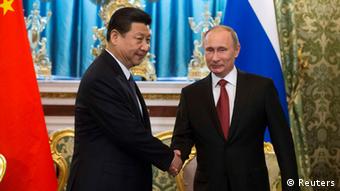 “China and Russia have often joined hands in torpedoing Western initiatives regarding a wide range of armed conflicts and international crises”
“China and Russia have often joined hands in torpedoing Western initiatives regarding a wide range of armed conflicts and international crises”
Looking at the fresh redrawing of maps in the Black Sea region, Beijing is wary of both defusing separatist appetites at home and protecting its business abroad (notably in its near abroad). Its abstention from the March 15 UN Security Council vote on a US-sponsored draft resolution condemning the breakaway referendum in Crimea, which Russia promptly vetoed, should be read in this perspective.
Chinese President Xi Jinping needs to contain the domestic fallout from any possible Russian blitzkrieg threatening further Kiev’s independence and territorial integrity – after Crimea, Putin could target the mostly Russophone Eastern and Southern Ukraine.
Much as it did in Georgia in 2008 and in Moldova earlier in the 1990s, the separatist card that Russia has been playing in Crimea, where roughly 60 percent of population is ethnically Russian, could trigger unease in China, whose rulers consider the breakaway feelings going through the Chinese autonomous regions of Tibet and Xinjiang as the most dangerous challenge to the country’s internal stability and security. Not to mention the prospect that Taiwan, a rebel province in Beijing’s view, holds a referendum on (de jure) independence from the mainland in the future.
Ukraine-China trade
Crimean separatism, coupled with Russia’s mounting interventionism, undermines the stability of Ukraine, which is also grappling with economic and financial hardships. China is Ukraine’s third-largest commercial partner after the European Union and Russia. Total trade in goods between the two countries was worth more than 8 billion USD in 2012, according to data from Eurostat and the International Monetary Fund (IMF).
The Middle Kingdom is the biggest buyer of Ukrainian weapons. Kiev exported 690 million USD in arms and equipment to China only in 2012, according to the Stockholm International Peace Research Institute (SIPRI), and it is worth noting that the first aircraft carrier of the Chinese People’s Liberation Army Navy (PLAN), Liaoning, is in reality a refurbished Ukrainian vessel.
Beijing has bolstered an agricultural cooperation with Kiev over the past few years. Last fall, news that China’s Xinjiang Production and Construction Corps had leased in June 2013 three million hectares of Ukrainian farmland for Chinese consumers attracted great attention. Later, Ukrainian authorities downplayed the case, denying any land grab and talking about a 2.8 billion USD agreement concerning Chinese assistance in the realm of irrigation technology.
In another respect, Wang Jing, the Chinese billionaire planning to build up an inter-oceanic waterway through Nicaragua, would be ready to spend 10 billion USD in a deepwater harbor and an economic zone in Crimea, Bloomberg News reported late in 2013.
In 2012, the Export-Import Bank of China granted a 3-billion-dollar loan to Ukraine in return for supplies of grain. Voices are growing that China is seeking compensation from Kiev for the breach of this deal, but Chinese officials have denied that they are contemplating any such move. On the other hand, the Chinese government has never confirmed the signing of a new credit agreement worth 8 billion dollars with the Ukrainian counterpart following a meeting in Beijing between Xi Jinping and Yanukovych back in December 2013.
Keeping a low profile
As usual in disputes far away from its regional perimeter of projection, China will maintain a low profile. It recognizes that there is too much power at stake in Ukraine, where the Euro-Atlantic and Russian spheres of influence collide, for it can go beyond nudging the Western bloc and Russia into accepting a compromise over the current spat.
Ukraine is quite different from Sudan and South Sudan, where sizable Chinese oil interests are matched by a well-established political clout, and this to such an extent that Beijing has partly given up its long-standing policy of non-interference in other nations’ internal affairs to resolve civil and border conflicts plaguing these two eastern African countries.
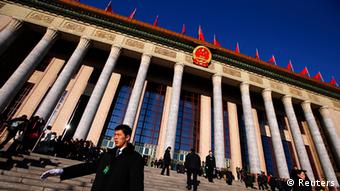 “Beijing has partly given up its long-standing policy of non-interference in other nations’ internal affairs”
“Beijing has partly given up its long-standing policy of non-interference in other nations’ internal affairs”
From China’s viewpoint, Kiev is also nowhere near as strategic as the “stans” at its doorstep. While it can be safely assumed that Beijing abhors any form of regime change, not least if it is a Western-backed one, it is equally true that it cannot turn a blind eye to a Kremlin claiming a power of guardianship of sorts in the post-Soviet space, regardless of their common membership in the Shanghai Cooperation Organization (SCO).
Much as in Crimea, Russia has military bases and troops dispatched in Central Asia, where former Soviet republics look to China for their economic development just like Ukraine turns to Europe for its political destiny, and where Beijing is advancing energy projects to reduce its oil and gas dependence on the Middle East in perennial turmoil.
If mass uprisings were to break out in these turbulent Central Asian nations, ruled by old autocrats and therefore structurally ill-suited to manage smooth political successions, Beijing could find itself in the same position as Europe is today in Ukraine, faced with the Russian bear justifying an armed intervention to defend its interests and citizens, as well as the lives of ethnic Russians, across this region.
Such a scenario ultimately amounts to a responsibility to protect in “Russian guise” that China would find indeed uncomfortable, if for no other reason than it would entail Moscow’s enhanced leverage on countries providing Beijing with over half of its gas imports.
Comments Off on China, Russia and the Ukrainian divide
Turnover of power in the Middle East Written
December 1st, 2013
By Emanuele Scimia.
As US interest in the Levant fades, East Asian nations fill the vacuum

As evidence of US disengagement from the Levant grows – the area encompassing Cyprus, Lebanon, Syria, the Palestinian territories, Jordan and Israel –the prospects are growing that the political vacuum will be filled by East Asian powers – particularly a China in search of energy self-sufficiency.
Growing capital flows to the Middle East, notably to mature market economies like Israel and Turkey, bear the signature of East Asia’s economic giants. Key sectors such as infrastructure, energy and defense form the bulk of Chinese, Japanese and South Korean investments in these two nations.
Unlike Western countries, Asian investors appear to be committed to economic corridor projects, in an obvious bid to propel their trade-oriented economies.
Turkey ushered in an underwater rail link between Asia and Europe on Oct. 29, the world’s first immersed tube tunnel connecting two continents. The new US$4 billion railway runs under the Bosphorus Strait for 1.4 kilometers. It was completed by a Japanese-Turkish joint-venture, with US$1 billion financing from the Japan Bank for International Cooperation.
Apart from Ankara’s suggestion envisaging it as part of a broader system of new, interconnected Silk Roads, the Marmaray underwater rail tube has undoubtedly the potential to further boost overland trade and exchanges between Europe and the Middle East.
If the Levant were not a permanent battleground, Turkey’s Marmaray could be the northern tip of a regional network of transport arteries, including the rail line that should connect Israel’s Mediterranean ports of Haifa and Ashdod with Eilat in the Gulf of Aqaba, a project carried out by the Israeli government with the injection of Chinese capital.
China is the world’s largest buyer of oil and gas from the Middle East, while Japan and South Korea are other two energy-thirsty nations. Israel looks to Asian customers for export from the Leviathan Gas Field, which straddles national and Cypriot seawaters. Its estimated reserves total a significant 8.9 trillion cubic feet, the third-biggest in the Middle East.
It is worth noting that in January state-owned China Petrochemical Corporation (Sinopec) came to an agreement with the US company Apache Corporation to buy 33 percent of its Egyptian oil and gas business. Sinopec sealed the deal for US$3.1 billion.
While their demand of fossil fuels is growing day by day, China and Japan are also channeling their investments into the nuclear industry. As Beijing funds the construction of new nuclear power plants in Britain, Tokyo plans to build nuclear reactors in Turkey.
On October 29, Mitsubishi Heavy Industries Ltd. struck a formal deal with the Turkish government to develop nuclear power reactors on the Black Sea shores. The Japanese conglomerate leads a corporate alliance (comprising France’s energy giant Areva) expected to invest as much as US$22 billion in the project, which makes provision for Tokyo’s export of nuclear technology to Ankara.
The defense business – previously dominated by he United States – is yet another gauge of political and economic interaction between Turkey, Israel and East Asian investors.
A US$3 billion arms deal that Turkey arranged with China later in September caused a stir across the region. Ankara is going to get a truck-mounted FD-2000 missile defense system from China Precision Machinery Import and Export Corporation (CPMIEC).
Low cost and Beijing’s readiness to agree to technology transfer prompted the Turkish government to turn to the still relatively untested FD-2000 while discarding the US Patriot missile system, at a time when there are six Patriot batteries installed in southern Turkey, managed by the North Atlantic Treaty Organization (NATO).
Conversely, Israel’s firm Elbit Systems Ltd has set up a joint partnership with South Korea’s aviation firm Sharp Aviation K Inc. The newborn Sharp Elbit Systems Aerospace (SESA) is based in Ansan, near Seoul. It will manufacture components for combat helicopters and planes and assist the South Korean Defense Ministry in developing home-grown fighter jets and light attack helicopters.
With the establishment of SESA, it is the first time an Israeli defense firm has joined hands with a South Korean arms manufacturer. Israel’s military industry is also in competition with the US defense behemoth Lockheed to upgrade South Korea’s missile defense system to Patriot Advanced Capability (PAC-III), according to a Sept. 12 dispatch by Yonhap news agency.
Co-production is a business model that Israeli arms companies are also promoting with the European Union (EU) and Turkey. In January, the EU Commission started funding Israel Aerospace Industries to produce drones that can stop vehicles in land scenarios and boats at sea without destroying them. This three-year-long project to develop crime-stopping drones is called Aeroceptor and worth US$6.5 million.
There is more than just prospering and profiting from US disengagement. With Washington’s interest toward the Middle East on the wane, neophytes of power politics at these latitudes must share the burden in the security realm if they want to see their investments protected.
However, facts at present point in the opposite direction. Take China, for example: notwithstanding its status of rising world power, Beijing is lagging behind Russia in the Levant, where Moscow is carrying out a strategy blending political intervention with military posture, as demonstrated most recently by the Kremlin’s central role in the Syrian crisis and its eagerness to conclude a US$2 billion arms deal with Egypt.
(Emanuele Scimia is a Rome-based journalist and geopolitical analyst.)





